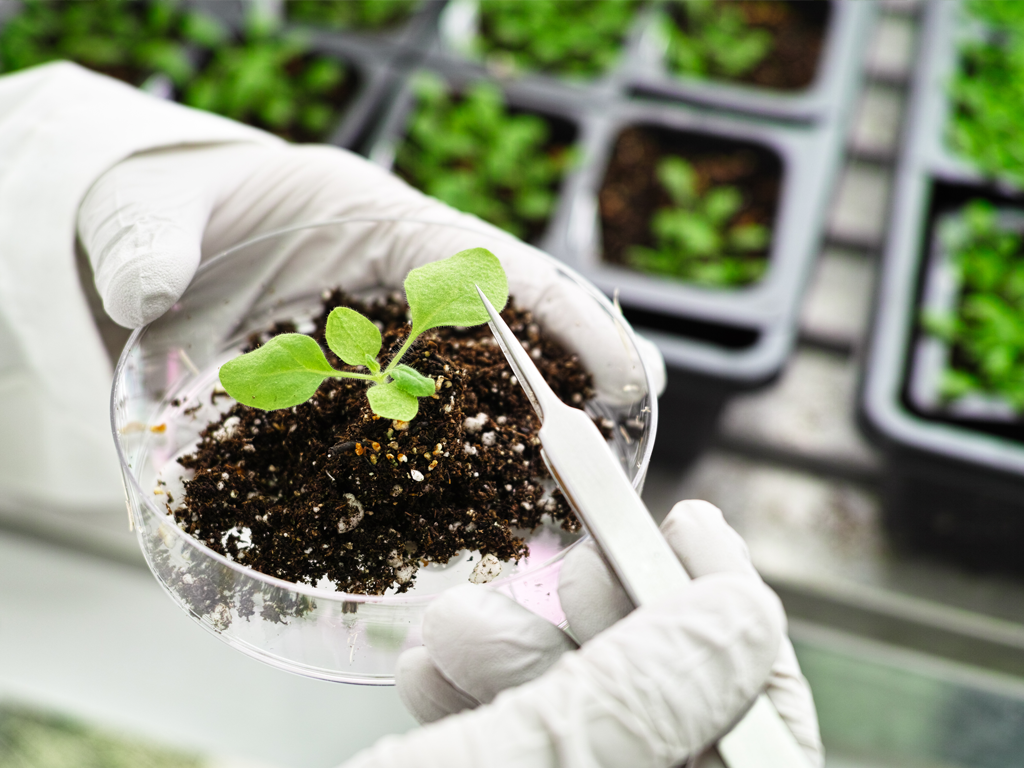As a company that is in constant pursuit of improving indoor air quality, we applaud any progress in alternative purification methods that make indoor spaces better and more beautiful. Recently, several organizations have taken steps toward such progress by genetically engineering plants to make them more efficient air purifiers. Building off the information in our previous article on plant purification, however, we find that genetically modified organisms (GMOs) are unlikely to replace air purifiers any time soon.
Plant Sequestration
When you think of plants as purifiers, you probably consider the fact that plants naturally absorb elements like CO2 that allow them to complete photosynthesis, (which produces the oxygen we breathe.) However, that’s not the only process that occurs. Plants also can store certain elements — including carbon and nitrogen — in their roots and soil. This is called sequestration and it occurs in oceans and geological formations.
How much carbon is being sequestered each year, and is it an effective amount? On average, roughly 36 billion tons of carbon are injected into the atmosphere by humans annually. However, of that 36 billion, only 25% of carbon is sequestered in terrestrial ecosystems.
With this in mind, can we expect non-GMO plants to efficiently treat carbon-based contaminants like VOC gases in the home or office? To put it bluntly, no.
Plants as Purifiers
Now that you understand how plants can sequester nutrients, what happens when we try to modify their natural sequestration ability to hold more than just carbon and nitrogen? Current studies at the University of Washington have allowed environmental engineers to experiment with genetically modifying plants to better remove VOC gases from the air. One experiment involved encoding a protein found in mammalian livers. It is also the same protein produced to break down alcohol in human bodies. While the GMO plants were found capable of removing more “chloroform and benzene from the air than their non-modified counterparts,” to be considered efficient in cleaning the air, “a large volume of their plants would need to be consolidated, effectively creating a sink, and a fan of some sort would be needed to blow VOCs [VOC gases] across their path.”
This is because plants are a form of passive purification; they require directed airflow to blow contaminants toward the plant for sequestration to occur. These results are nothing to overlook, yet many professionals remain skeptical about the ability of GMO plants to show a meaningful improvement in air quality.
The Current GMO Plant Market
However, an emerging French biotech startup hopes to corner the GMO plant market with its solution to plant purification. With their new GMO pothos — which they claim is “the first houseplant genetically engineered to remediate indoor air pollution,” — they are the first to enter this market with a potentially viable option. Their high-tech pothos is “photogenic, fast-growing, and hard to kill.” It also can metabolize indoor air pollutants that are commonly missed by filter-based air purifiers, such as VOC gases produced by “paint, gas stoves, and building materials.”
The startup utilizes a 2-pronged system when treating pollutants. The first step is genetic engineering of the plant’s metabolism; the second involves bacterial microbes that turn BTEX (benzene, toluene, ethylbenzene, and xylene) pollutants into sugars and amino acids. While this seems promising, in reality only 30% of the GMO plant’s air cleaning capacity is attributed to their GMO pothos. It turns out their bacterial microbes (and possibly the biochar) in the pot are pulling the majority of weight when it comes to improving indoor air quality.
Now to answer the question everyone is asking; does this idea really work? In theory, yes; however, field tests have yet to yield reliable results. You would also need multiple GMO plants to effectively treat your space.
The Future of GMO Purification
Why is there a demand for purifying plants when you can just buy an air purifier that doesn’t require sunlight, soil, food, and water? The demand for purifying plants stems from a 1989 NASA study. To sum up our view on said study, we believe its results have been misrepresented. While the startup mentioned above acknowledges the flaws in the NASA study, its real struggle is with the practicality of its product compared to traditional air purifiers.
While we hope to see a future where there are multiple purification technological advancements that can be used in harmony to effectively remove harmful contaminants from the air, there is still a long way to go. However, if you are looking for an air purifier that targets bacteria, viruses, mold, VOC gases, AND particulate matter, we recommend looking at a device equipped with ActivePure Technology® and a HEPA filter.
Devices with ActivePure Technology® have been proven to reduce a variety of harmful contaminants ranging from Candida to the virus that causes COVID-19. ActivePure devices not only inactivate contaminants in the air and on surfaces, but they continuously protect your space and provide you peace of mind. Discover what sets ActivePure air purifiers apart in the heavily populated market of air purification devices.



